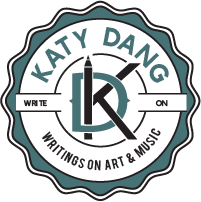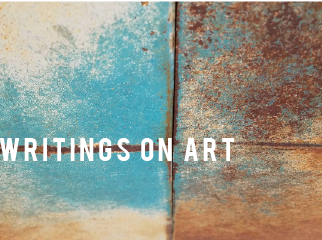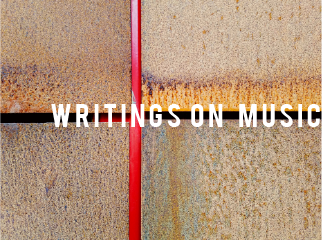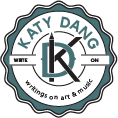Idaho Arts Quarterly Editor’s Notes
By Katy Dang
I took over as the editor of the Idaho Arts Quarterly Magazine in 2008 and was responsible for a complete redesign of the magazine. These are the Editor’s Notes that accompanied each issue of IAQ.
Summer 2008
https://www.boiseweekly.com/boise/summer-2008/Content?oid=937028
So. When Idaho Arts Quarterly magazine started in 2002, the publishers had big dreams. They wanted to expand the coverage of the arts from their home base of Boise into the rest of the state, making a connection between the different settings where art is created. Their vision was as immense as the state. Over the years, we have covered artists from the farthest reaches of Idaho, revealing a vast array of talent and an overriding passion for art.
Like the rest of the world, Idaho is not so far off the beaten path as it once was. We are of an independent spirit here, a fact that has gained recognition and respect, and the arts have quietly cut their own swath.
Now, we have set about to re-focus the magazine while continuing our efforts to cover the arts statewide. As a result, we have created new sections to re-define the magazine and achieve our objectives:
To study the arts
Front and Center features our cover artist; Character Sketch allows us to profile a creator in detail; Newsworthy allows us to report in depth on issues facing the arts community; and Further lets us represent work and events throughout the state.
To represent the arts
Original artwork will be featured throughout the magazine. Musings offers works of poetry, fiction, and non-fiction; Influences lets artists speak for themselves, in their own voices, about what inspires them; and Primary Source gives the reader a glimpse of something new that is going on, in the hopes that they will seek out more information on their own.
To promote the arts
Of Note provides a selection of events throughout the state. Our complete listings of statewide events are available online. Reading Idaho reviews books on, about, set in Idaho or written by an Idaho author.
Our stage is not limited to the borders of our state. In addition to homegrown talent, we welcome those who have chosen Idaho as the place where they create. We also open our pages to the national and international artists who are shown here, and relish our role as part of an arts community that extends to the far reaches of the imagination, where no borders exist.
Fall 2008
https://www.boiseweekly.com/boise/fall-2008/Content?oid=937851
The arbitrary borders that define Idaho—or any other state, for that matter—give a sense of place to where we live, work and experience the world. Within these borders is a vast array of settings. The view from our window could be of the rolling expanse of the Palouse or a concrete wall from a subterranean basement in the capitol city. We might observe any number of rivers flowing past, catch the outline of the snow-capped Owyhees, or it might be desert as far as the eye can see. The artists who find their place in our state run the gamut from traditional saddlemakers to avant-garde illustrators. We, as a whole, are at home with this range.
Our re-introduction of Idaho Arts Quarterly has produced quite a response. We have received overwhelming feedback to our pledge to give the arts throughout the state the attention that they deserve. In this issue, we are honored to debut a short story by Bill Cope, longtime columnist for Boise Weekly. His collaboration with Mike Flinn on The Greenman Stories takes his words into an entirely new realm. Playwright and novelist Maria Dahvana Headley contributes her lively voice, including us in her conversation with writer and actor Lauren Weedman. As the buzz around choreographer Trey McIntyre continues to increase, we hear from the man himself about what inspires him. And we are thrilled to feature a glimpse of the score of composer Jim Cockey’s An Idaho Symphony.
As we move forward in our explorations, we remain aware that the way we define ourselves is up to us; we don’t need to seek out our place in the art world by comparing ourselves to others and explaining what we aren’t. What we need to do is look at what we are. This opens us to the study of how we got here, and why, and allows us to look at the myriad of ways that we express ourselves creatively.
We, too, are excited by this journey and look forward to the stories that we are fortunate enough to hear and recount. Our ears are open; tell us your tales.
Winter 2008
https://www.boiseweekly.com/boise/winter-2008/Content?oid=1013192
What is it about Idaho that takes hold of the imagination?
The landscape that surrounds us certainly plays a role in who we are, whether through the images that make up the background of our memories (visually), the sounds that form the score to our lives (aural), or the framework that we use to try to portray our experiences (written). When it comes time for an artist to create, part of what occurs is a tracing of the environment that inhabits their brain. The context of a work can provide deep associations for the artist and audience, so the importance of setting can not be underestimated.
“Any time I think of a story, it is set in Idaho,” says Pamela Johnston, author of Little Lost River, a novel published by University of Nevada Press (2008) and excerpted in this issue of Idaho Arts Quarterly. Although she hasn’t lived here for many years, this is the place of her fiction.
Johnston’s novel is set in Boise in the early 1980s. Readers familiar with the city will recognize many of the places that the characters inhabit: the Egyptian Theatre, Hollywood Market, The Crow Inn and Fanci Freez. She uses multiple narrators to tell the tale of two young women and their mothers. The setting is specific, but the inter-relationships speak to the reader on a universal level, and the observations transcend place.
But it is the place that sets this book apart. Just as it is the setting that defines the character, so does the setting define the work. “I’m trying to tell a truth about something that people don’t know about,” she says. “People think they know about Idaho, but they don’t: They have these images from movies that are actually made in Montana. I’m trying to tell the truth about Idaho.”
Getting to the truth of any matter is a worthy endeavor, and one that can be particularly hard to achieve in the interpretive world of the arts. Once a place has taken hold of an artist’s spirit, its presence in their work becomes a key component of their expression.
“Idaho is definitely the landscape of my imagination,” says Johnston.
Summer 2009
https://www.boiseweekly.com/boise/editors-note/Content?oid=1062259
Art is said to have a life of its own. But what exactly does that entail, as a piece of work goes from the hands of its creator on to its own separate existence? Where does it go, and who becomes its keeper? Who gets to see it along the way?
This issue of Idaho Arts Quarterly looks into some of the ways that art is presented and displayed after it has left the artists’ hands. In one case, it is taken over by another artist, whose investigations into how art is represented bring the storied New York art scene onto anyone’s computer screen. The work of Loren Munk, a.k.a. James Kalm, uses technological opportunities to break down the barrier of the gallery walls. In another piece, we are given a tour and get a glimpse into the world of art collectors as they build and present their collection. There is a look at the various places that art can be showcased, from café walls to galleries, and what that location can mean to the art, the artist, and the art community as a whole. We also check into one way that artists share their work among themselves, using a print exchange where the audience is other participating printmakers. Along the way, we explore a home-grown playwrights conference; a marvel of modern architecture and can-do attitude, built to house a free summer symphony concert series; and we get a chance to see just what all those shoe-gazers are actually looking at.
As our investigation into the arts in Idaho continues, we become increasingly aware of both the fragile, tenuous nature of the art world and the over-riding knowledge that art is crucial, vital and integral in all times. The responses to these times will be watched with growing intensity. For now, lift your eyes and open your ears: Summer is upon us, and there is much to do and see. Let it nourish you.
Winter 2009
https://www.boiseweekly.com/boise/editors-notewinter-idaho-arts-quarterly-2009/Content?oid=1349601
The first snow of the season has fallen and unlike we humans, the trees have discarded their extra coverings and stand bare. The transition to a simpler state is telling of our circumstances as we simplify, shed excess, stand strong and survive. It is all part of a process that we must endure.
In this issue, we are honored to tell the story of “Speak for the Trees,” the book composed by Andria Friesen featuring the work of 76 internationally renowned artists. During a visit to Friesen Gallery in Sun Valley last summer, Friesen’s passion for the venture that she was undertaking came spilling forth. Much of what is contained in the article herein—the first to appear on the project—was described that day. Friesen also put us in touch with individuals involved in the project, which led to discussions with some of the most gifted artists working today.
I say “discussions” because that is the approach that we embrace here at Idaho Arts Quarterly. We do not conduct interviews, per se, but instead attempt to draw the subjects of our articles into a conversation. Our goal is to have the reader become part of that dialog. We tell tales, we discuss, we converse, we describe. By design, we do not criticize. We trust people to come to their own conclusions and form their own opinions. We let readers know what is going on, by way of our comprehensive listings for statewide arts events on our Web page, but even so, we like to think of that as an invitation to participate.
Why have we chosen to do things this way? Because we love the arts. We appreciate art. We respect artists. We love to look, and to listen, and to feel. The arts are an integral part of us, as they are of you.
As we fall into winter, take note of your good fortune to enjoy, observe and support the arts that exist around you. You need them as much as they need you.
-Katy Dang, Editor



